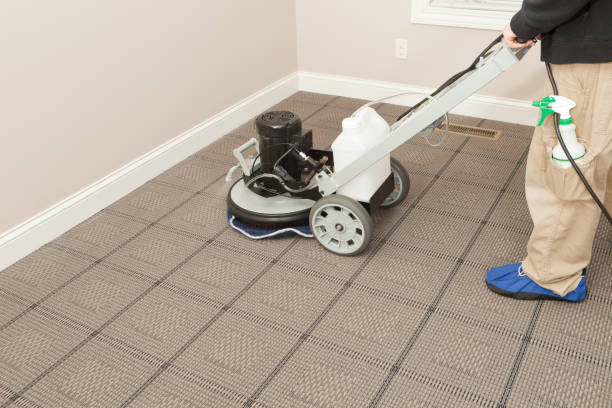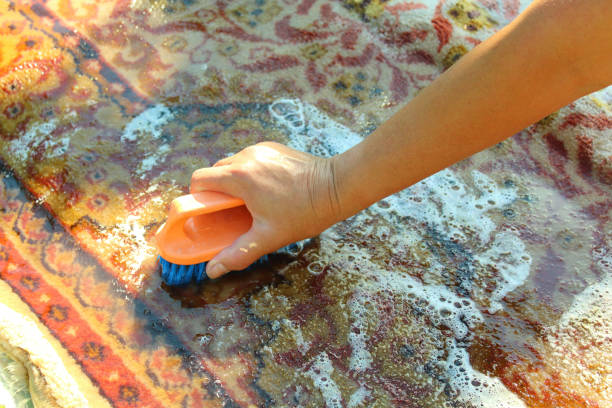Discovering an old, unsightly stain on your carpet can be frustrating, especially when you have no clue how it got there. Whether you’ve just moved into a new home or uncovered a mystery mark while rearranging your furniture, old stains are stubborn but not impossible to eliminate.
Carpets bring comfort and warmth to a home, but they are magnets for dirt, spills, and stains. Fortunately, you can restore your carpet to its original charm with the right approach.
Here’s a comprehensive, fresh guide on how to remove old stains from your carpet.
1. Understanding the Nature of the Stain
Identifying the stain type is the first step towards efficient stain removal. Stains can generally be categorized into water-soluble and non-water-soluble stains. Knowing the difference helps you choose the most effective cleaning method.
Water-Soluble Stains
- Mud
- Washable ink
- Food dye
- Latex-based paint
- Juices (like berry juice)
Stubborn Water-Soluble Stains
- Coffee
- Wine
- Chocolate
- Blood
Non-Water-Soluble Stains
- Oil-based stains
- Wax
- Grease
- Tar
2. Essential Cleaning Supplies
Before you begin, having the right cleaning tools and supplies is important. Here’s what you’ll need:
- White cloth or paper towels (to prevent dye transfer)
- Blunt tool (like a butter knife) to scrape off residue
- Spray bottle (for homemade cleaning solutions)
- Dish soap
- Baking soda
- White vinegar
- Hydrogen peroxide (for tough stains)
- Carpet stain remover (optional)
- Rubber gloves (for safety, especially when dealing with biohazard stains like blood)
3. Methods for Removing Old Stains from Your Carpet
Method 1: General Approach for Water-Soluble Stains
- Scrape Off Solids: Gently remove any hardened material using a blunt tool like a butter knife. Avoid rubbing, as this pushes particles deeper into the carpet.
- Apply Cleaning Solution: Mix warm water and dish soap in a spray bottle. Spray the solution directly onto the stain.
- Blot, Don’t Rub: Blot the stain with a white cloth or paper towel. Start from the outer edges and work your way in to avoid spreading the stain.
- Rinse and Dry: Rinse the area with clean water to remove any soapy residue, then blot dry. Let the carpet air dry.
Method 2: Vinegar and Baking Soda Solution
- Sprinkle baking soda directly onto the stain.
- Mix equal parts white vinegar and water in a spray bottle.
- Spray the vinegar solution over the baking soda and watch it fizz. Let it sit for 30 minutes.
- Blot the stain using a cloth and rinse with water.
4. Specific Stain Solutions
Food & Drink Stains (Coffee, Wine, Chocolate, etc.)
- Remove any solids by gently scraping.
- Mix one part white vinegar and two parts water.
- Blot the stain with a cloth dipped in the solution.
- If the stain persists, add a pinch of baking soda to the solution and repeat the process.
Dirt & Mud
- Allow mud to dry completely.
- Scrape off dried mud with a blunt knife.
- Vacuum up any loose particles.
- Mix a solution of warm water and dish soap.
- Blot the stain, working from the outside in.
Blood Stains
- Dried blood can be stubborn. Start by using a soft brush to break up the particles.
- Always use cold water, as hot water sets blood stains.
- Mix cold water with dish soap and blot the stain using a cloth.
- If the stain doesn’t come out, use hydrogen peroxide. Apply a small amount, wait a few minutes, and blot with a clean cloth.
Pet & Human Poop Stains
- Pick up solids using a plastic bag or a disposable paper towel.
- Mix a 50/50 solution of white vinegar and water for pet stains.
- For human waste stains, use cool water and dish soap.
- Blot the stain with the solution, rinse, and repeat until the stain is gone.
5. When to Call the Professionals
If your attempts to clean the stain aren’t working, it may be time to call the experts. Professional carpet cleaners use industrial-grade equipment and deep-cleaning methods that can tackle even the most persistent stains. Hiring a professional is especially useful if you have large, old, or deeply embedded stains.

Signs You Need Professional Help
- The stain does not budge after multiple cleaning attempts.
- Your carpet’s fabric is delicate or sensitive.
- You’re dealing with biohazard stains (like large bloodstains).
6. Preventing Future Stains
Prevention is better than cure, and this also applies to carpet stains. Here are a few proactive measures you can take to keep your carpet in top condition:
- Use Doormats: Place mats at entryways to reduce dirt and mud tracking.
- Establish No-Shoe Zones: Ask family members and guests to remove shoes when indoors.
- Clean Spills Immediately: The longer a spill sits, the deeper it penetrates carpet fibres.
- Invest in a Carpet Protector: Apply a protective coating to your carpet to make it more stain-resistant.
7. Quick Reference Table for Stain Removal
| Type of Stain | Cleaning Solution | Cleaning Method |
|---|---|---|
| Coffee/Tea | Vinegar + Baking Soda | Blot with solution, rinse, repeat |
| Wine | Hydrogen Peroxide + Dish Soap | Blot with solution, rinse, repeat |
| Blood | Cold Water + Dish Soap | Blot with solution, rinse, repeat |
| Mud | Dry Mud + Dish Soap Solution | Scrape, blot with solution, rinse |
| Poop | Vinegar + Water (pet) | Blot with solution, rinse, repeat |
Final Thoughts
Removing old stains from carpets can seem like an uphill battle, but you can restore your carpet’s beauty with the right tools, patience, and techniques. Identifying the type of stain is crucial to choosing the correct removal method. Homemade solutions like vinegar, baking soda, and dish soap are effective, affordable, and safe for most carpets.
If all else fails, don’t hesitate to call in the professionals. They have the expertise and equipment to tackle even the most persistent stains, saving you time and effort. Take proactive measures to protect your carpet from future stains by establishing rules like “no shoes indoors” and cleaning spills as soon as they happen.
With these expert strategies, your carpet will remain clean, fresh, and welcoming. Take control of those old stains and transform your living space into a cleaner, more hygienic environment.


